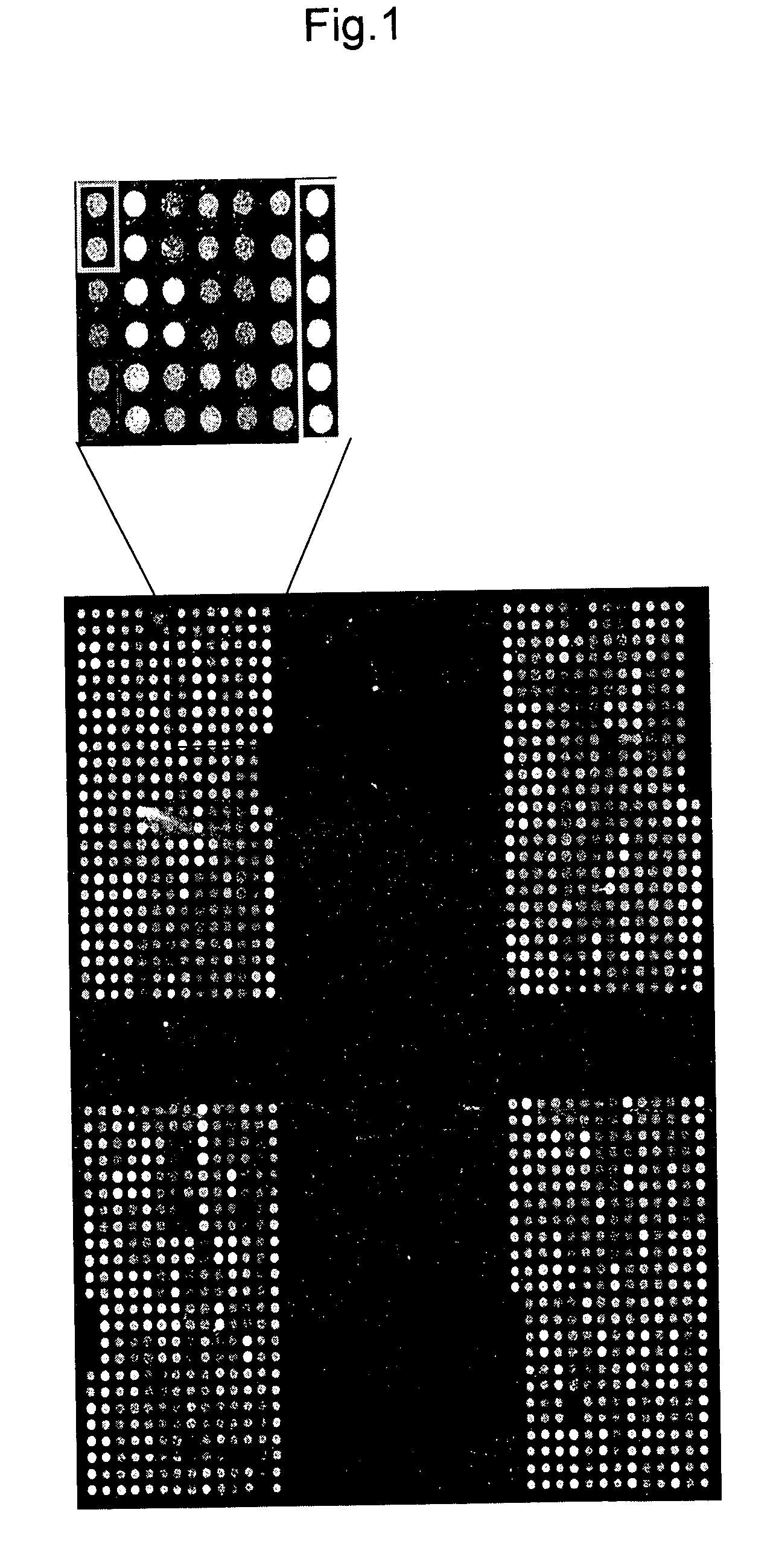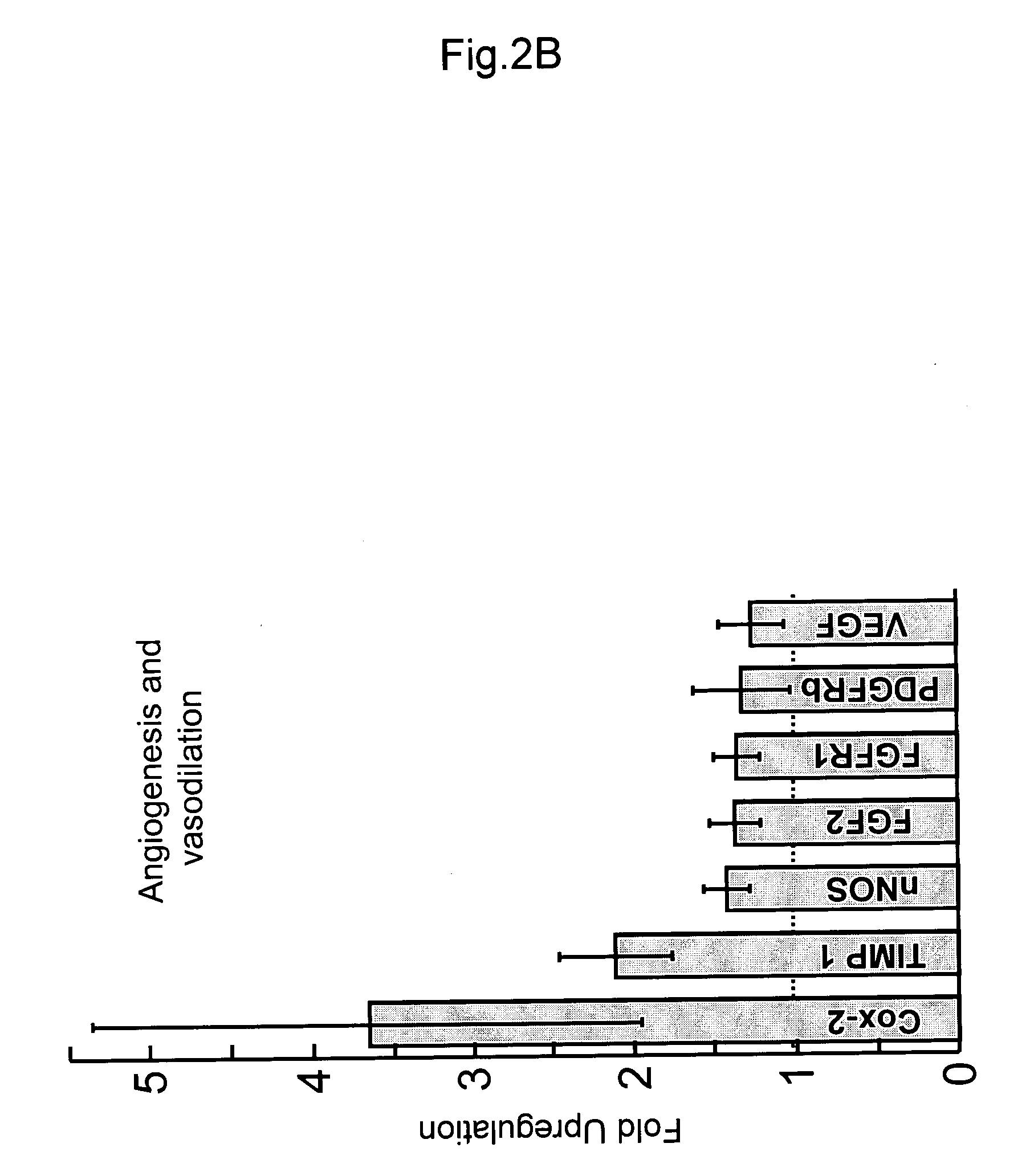Systems and methods for diagnosing & treating psychological and behavioral conditions
a psychological and behavioral condition technology, applied in the field of gene chips, can solve the problems of atypical depression, many masks, unpredictable course, weight loss, etc., and achieve the effects of reducing the number of patients
- Summary
- Abstract
- Description
- Claims
- Application Information
AI Technical Summary
Benefits of technology
Problems solved by technology
Method used
Image
Examples
experiment 1
res of ECS
[0162] The role of growth factor signaling in the molecular action of ECS was studied using a customized microarray approach. The glass chip that we developed contains 645 genes, including most known growth factor classes, cognate receptors, known downstream targets, and genes containing CRE sites in their promoter region. The 645 genes were as follows (genes in bold did not yield a PCR product and thus were not included in the gene chip): INHBA, INHBB, INHBC, ADDA, ADDB, ADDG, ANG1, ANG2, ANGPTL1, ANGPTL2, ANGPTL3, ANGPTL4, ANGPTL5, ARTNP, ARTN, BCAT, BCATBP, BSEPC, BAX, BAXEX1 / 2, BAXA, BAXB, BECL, BCL2MF, BMP1, BMP2, BMP3, BMP4, BMP5, BMP6, BMP7, BMP15, CAMKIA, CAMKIG, CAMKIB1 / 2, CAMKKB, CAMKKA, CAMKIIA, CAMKIIB, CAMKIID, CAMKIIG, CAMKIV, CASP3, CATNBIP1, CERBB2, CERBB3, CFOS, CJUN, CMOS, CMYCEX1, MIBP1, CNTF, CNTFR, CREB, CSF1M, CSF3G, CSFR1, CSFR2, DPPIV, EGR1, ENDOST, ENOS, ENOSIP, NNOS, EGFR, NSEGFLRD, EGFRRP, EGF, EPO, EPOR, AFGFV1, AFGFV2, AFGFV3, FIBP, FGF4, FGFLF...
experiment 2
nfirmation of Differentially Expressed Genes
[0166] Secondary validation for several regulated genes was performed in an independent set of ECS-treated animals different from those used for the microarray study. Shown in FIG. 3 are representative ISH images for several growth factors or growth factor-induced genes that were identified on the cDNA array. The ISH images are from acute ECS treatments, whereas quantitative graphs are presented for both acute and chronic treatments. Neuritin, an activity and neurotrophic factor-induced gene (Naeve et al., 1997), was upregulated after both acute and chronic ECS (FIG. 3A). The highest level of regulation was in the granule cell layer of the dentate gyrus (DG), although a statistically significant upregulation was seen in the CA1 pyramidal cell layer with chronic ECS treatment. We also optimized a sensitive RNA blot assay, which also confirms the results of the microarray experiments. The RNA blots were conducted using total hippocampal RNA,...
experiment 3
f Growth Factor Signaling Genes in the Choroid Plexus
[0170] During the secondary confirmation of microarray results by ISH, we noticed high levels of expression of some of the growth factor genes in the choroid plexus. This enrichment of growth factors, combined with the fact that the CP is known to express several growth factor genes and to supply these growth factors to the brain, led us to examine gene expression in the CP relative to the hippocampus and cerebral cortex, as well as gene regulation after chronic ECS (6 hr time point). Of the 171 growth factor genes, 11 were most highly expressed in the hippocampus, and 10 were most highly expressed in the CP. Expression of 13 of the growth factor genes was common to the CP, hippocampus, and cortex (FIG. 6A). A list of genes that had significantly higher expression in CP is also shown. We performed the RNA blot assay to obtain precise levels of expression of some of these genes in the CP relative to the hippocampus and cerebral cor...
PUM
| Property | Measurement | Unit |
|---|---|---|
| Fraction | aaaaa | aaaaa |
| Therapeutic | aaaaa | aaaaa |
| Gene expression profile | aaaaa | aaaaa |
Abstract
Description
Claims
Application Information
 Login to View More
Login to View More - R&D
- Intellectual Property
- Life Sciences
- Materials
- Tech Scout
- Unparalleled Data Quality
- Higher Quality Content
- 60% Fewer Hallucinations
Browse by: Latest US Patents, China's latest patents, Technical Efficacy Thesaurus, Application Domain, Technology Topic, Popular Technical Reports.
© 2025 PatSnap. All rights reserved.Legal|Privacy policy|Modern Slavery Act Transparency Statement|Sitemap|About US| Contact US: help@patsnap.com



